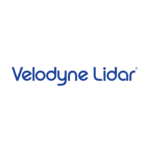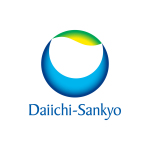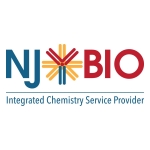- In the Phase III trial CHRONOS-3 of 458 patients with indolent non-Hodgkin’s Lymphoma (iNHL), the investigational combination of Aliqopa and rituximab was statistically significant in delaying disease progression or death (HR=0.52, 95% CI 0.39, 0.69) compared to rituximab and placebo, with a median progression-free survival (PFS) of 21.5 months (95% CI 17.8, 33.0) versus 13.8 months (95% CI 10.2, 17.5)1
- The CHRONOS-3 trial included several prespecified iNHL subgroups including follicular lymphoma (FL; n=275), marginal zone lymphoma (MZL; n=95), small lymphocytic lymphoma (SLL; n=50), and lymphoplasmacytoid lymphoma/Waldenström macroglobulinemia (LPL/WM; n=38)1
- Bayer is discussing the data from CHRONOS-3 with health authorities worldwide
Abstract: CT001

WHIPPANY, N.J. — (BUSINESS WIRE) — Results from the randomized, double-blind, placebo-controlled Phase III trial CHRONOS-3 show a significant improvement in progression-free survival (PFS) with the investigational combination of Aliqopa® (copanlisib) and rituximab given intravenously in patients with relapsed indolent non-Hodgkin’s Lymphoma (iNHL) compared to the combination of rituximab and placebo. After a median follow-up of 19.2 months, patients treated with this combination had a median PFS of 21.5 months (95% CI 17.9, 33.0) versus 13.8 months in patients treated with rituximab and placebo (95% CI 10.2, 17.5), (HR=0.52, p=0.000002). No new safety signals were identified for Aliqopa in the combination arm of the study.1 The data will be presented in a Clinical Trials Plenary Session on April 10 at the virtual American Association for Cancer Research (AACR) Annual Meeting 2021 and simultaneously published in The Lancet Oncology.
CHRONOS-3 is a Phase III randomized, double-blind, placebo-controlled trial with the objective to evaluate whether Aliqopa in combination with rituximab is superior to placebo plus rituximab in extending PFS in patients with relapsed iNHL following at least one prior rituximab-containing therapy. Patients who had a progression-free and treatment-free interval of at least 12 months after completion of the last rituximab-containing regimen or patients unwilling/unfit or for who chemotherapy was contraindicated by reason of age, co-morbidities and/or residual toxicity were included.2
In 2017, Aliqopa was approved for the treatment of adult patients with relapsed follicular lymphoma (FL) who have received at least two prior systemic therapies based on the results of a single-arm, multicenter, Phase II clinical trial (CHRONOS-1).3 Accelerated approval was granted for this indication based on overall response rate (ORR). Continued approval for this indication is contingent upon verification and description of clinical benefit in a confirmatory trial.
“In clinical practice, we have seen an overall improvement in the prognosis of iNHL patients, yet relapsed disease is still a prominent treatment challenge,” said Matthew J. Matasar, M.D., Medical Oncologist, Regional Care Network Medical Site Director, Memorial Sloan Kettering Cancer Center (MSK) Bergen. “The results reported with the combination of copanlisib and rituximab suggest a potential advancement for patients with these diverse types of cancers.”
“Bayer is committed to putting patients’ needs first and delivering innovative treatment options that address areas of high unmet need, and clinical research is the first step in that process,” said Scott Z. Fields, M.D., Senior Vice President and Head of Oncology Development at Bayer. “These data highlight the potential of Aliqopa and rituximab as a new strategy for treating these patients and we look forward to advancing regulatory discussions.”
Bayer is in discussions with health authorities worldwide regarding the data from CHRONOS-3.
Additional CHRONOS-3 Data Being Presented at AACR
In addition to the primary endpoint of PFS, data on the secondary endpoints of ORR and complete response rate (CRR) will also be presented. Best ORR for the combination of Aliqopa and rituximab was 80.8% (95% CI 76, 85) versus 47.7% (95% CI 40, 56) for rituximab and placebo (p<0.0001), with 33.9% and 14.6% of patients achieving CR, respectively. Of the relapsed iNHL patients included in the trial, 60% had FL, 20.7% marginal zone lymphoma (MZL), 10.9% small lymphocytic lymphoma (SLL) and 8.3% lymphoplasmacytoid lymphoma/Waldenström macroglobulinemia (LPL/WM). Analysis of the subtypes will be presented at AACR and published in The Lancet Oncology.1
All-grade treatment-emergent adverse events (TEAEs) observed with the Aliqopa and rituximab combination that occurred in more than 20% of the patients included hyperglycemia (69.4%), hypertension (49.2%), diarrhea (33.6%), neutropenia (20.8%), nausea (22.5%) and pyrexia (20.5%). Discontinuation due to all-grade TEAEs in CHRONOS-3 for Aliqopa and rituximab was 32% versus 8% for rituximab and placebo.1
Aliqopa is an intravenous phosphatidylinositol-3-kinase (PI3K) inhibitor with predominant activity against alpha and delta isoforms the PI3K-alpha and PI3K-delta isoforms expressed in malignant B cells.4 Aliqopa is approved in the U.S. under the accelerated approval pathway for the treatment of adult patients with relapsed FL who have received at least two prior systemic therapies. Continued approval for this indication may be contingent upon verification and description of clinical benefit in a confirmatory trial. Accelerated approval was granted for this indication based on an ORR of 59% (n=61/104; 95% CI 49, 68), including 14% (15/104) of CRs from the open-label, single-arm multicenter, Phase II clinical trial (CHRONOS-1), in a total of 142 subjects, which included 104 subjects with follicular B-cell non-Hodgkin’s Lymphoma who had relapsed disease following at least two prior treatments. In the updated two-year follow-up analysis conducted on data until 16 weeks after the last patients eligible for full analysis started treatment, Aliqopa ORR was 59% (n=61; 95% CI 49, 68), including 20% CR (n=21).5 Tumor response was assessed according to the International Working Group response criteria for malignant lymphoma. Efficacy based on ORR was assessed by an Independent Review Committee.
Disclosure: This study was sponsored by Bayer AG. Dr. Matasar has received honoraria from Bayer AG and subsidiaries of Bayer AG for advising and related activities. Bayer AG also provides research funding for Dr. Matasar through Memorial Sloan Kettering Cancer Center (MSK). In addition, Dr. Matasar has received honoraria from Roche/Genentech for advising and related activities, and the company also provides research funding for him through MSK.
About Aliqopa® (copanlisib) Injection3
Aliqopa (copanlisib) is indicated for the treatment of adult patients with relapsed follicular lymphoma (FL) who have received at least two prior systemic therapies. Accelerated approval was granted for this indication based on overall response rate. Continued approval for this indication may be contingent upon verification and description of clinical benefit in a confirmatory trial.
Aliqopa is an inhibitor of phosphatidylinositol-3-kinase (PI3K) with inhibitory activity predominantly against PI3K-α and PI3K-δ isoforms expressed in malignant B cells. Aliqopa has been shown to induce tumor cell death by apoptosis and inhibition of proliferation of primary malignant B cell lines. Aliqopa inhibits several key cell-signaling pathways, including B-cell receptor signaling, CXCR12 mediated chemotaxis of malignant B cells, and NFκB signaling in lymphoma cell lines.
IMPORTANT SAFETY INFORMATION FOR ALIQOPA® (copanlisib)
Infections: Serious, including fatal, infections occurred in 19% of 317 patients treated with ALIQOPA monotherapy. The most common serious infection was pneumonia. Monitor patients for signs and symptoms of infection and withhold ALIQOPA for Grade 3 and higher infection.
Serious pneumocystis jiroveci pneumonia (PJP) infection occurred in 0.6% of 317 patients treated with ALIQOPA monotherapy. Before initiating treatment with ALIQOPA, consider PJP prophylaxis for populations at risk. Withhold ALIQOPA in patients with suspected PJP infection of any grade. If confirmed, treat infection until resolution, then resume ALIQOPA at previous dose with concomitant PJP prophylaxis.
Hyperglycemia: Grade 3 or 4 hyperglycemia (blood glucose 250 mg/dL or greater) occurred in 41% of 317 patients treated with ALIQOPA monotherapy. Serious hyperglycemic events occurred in 2.8% of patients. Treatment with ALIQOPA may result in infusion-related hyperglycemia. Blood glucose levels typically peaked 5 to 8 hours post-infusion and subsequently declined to baseline levels for a majority of patients; blood glucose levels remained elevated in 17.7% of patients one day after ALIQOPA infusion. Of 155 patients with baseline HbA1c <5.7%, 16 (10%) patients had HbA1c >6.5% at the end of treatment.
Of the twenty patients with diabetes mellitus treated in CHRONOS-1, seven developed Grade 4 hyperglycemia and two discontinued treatment. Patients with diabetes mellitus should only be treated with ALIQOPA following adequate glucose control and should be monitored closely.
Achieve optimal blood glucose control before starting each ALIQOPA infusion. Withhold, reduce dose, or discontinue ALIQOPA depending on the severity and persistence of hyperglycemia.
Hypertension: Grade 3 hypertension (systolic 160 mmHg or greater or diastolic 100 mmHg or greater) occurred in 26% of 317 patients treated with ALIQOPA monotherapy. Serious hypertensive events occurred in 0.9% of 317 patients. Treatment with ALIQOPA may result in infusion-related hypertension. The mean change of systolic and diastolic BP from baseline to 2 hours post-infusion on Cycle 1 Day 1 was 16.8 mmHg and 7.8 mmHg, respectively. The mean BP started decreasing approximately 2 hours post-infusion; BP remained elevated for 6 to 8 hours after the start of the ALIQOPA infusion. Optimal BP control should be achieved before starting each ALIQOPA infusion. Monitor BP pre- and post-infusion. Withhold, reduce dose, or discontinue ALIQOPA depending on the severity and persistence of hypertension.
Non-infectious Pneumonitis: Non-infectious pneumonitis occurred in 5% of 317 patients treated with ALIQOPA monotherapy. Withhold ALIQOPA and conduct a diagnostic examination of a patient who is experiencing pulmonary symptoms such as cough, dyspnea, hypoxia, or interstitial infiltrates on radiologic exam. Patients with pneumonitis thought to be caused by ALIQOPA have been managed by withholding ALIQOPA and administration of systemic corticosteroids. Withhold, reduce dose, or discontinue ALIQOPA depending on the severity and persistence of non-infectious pneumonitis.
Neutropenia: Grade 3 or 4 neutropenia occurred in 24% of 317 patients treated with ALIQOPA monotherapy. Serious neutropenic events occurred in 1.3%. Monitor blood counts at least weekly during treatment with ALIQOPA. Withhold, reduce dose, or discontinue ALIQOPA depending on the severity and persistence of neutropenia.
Severe Cutaneous Reaction: Grade 3 and 4 cutaneous reactions occurred in 2.8% and 0.6% of 317 patients treated with ALIQOPA monotherapy respectively. Serious cutaneous reaction events were reported in 0.9%. The reported events included dermatitis exfoliative, exfoliative rash, pruritus, and rash (including maculo-papular rash). Withhold, reduce dose, or discontinue ALIQOPA depending on the severity and persistence of severe cutaneous reactions.
Embryo-Fetal Toxicity: Based on findings in animals and its mechanism of action, ALIQOPA can cause fetal harm when administered to a pregnant woman. In animal reproduction studies, administration of copanlisib to pregnant rats during organogenesis caused embryo-fetal death and fetal abnormalities in rats at maternal doses as low as 0.75 mg/kg/day (4.5 mg/m2/day body surface area) corresponding to approximately 12% the recommended dose for patients. Advise pregnant women of the potential risk to a fetus. Advise females of reproductive potential and males with female partners of reproductive potential to use effective contraception during treatment and for at least one month after the last dose.
Adverse Drug Reactions: Serious adverse reactions were reported in 44 (26%) patients. The most frequent serious adverse reactions that occurred were pneumonia (8%), pneumonitis (5%) and hyperglycemia (5%). Adverse reactions resulted in dose reduction in 36 (21%) and discontinuation in 27 (16%) patients. The most frequently observed adverse drug reactions (≥20%) in ALIQOPA-treated patients were: hyperglycemia (54%), leukopenia (36%), diarrhea (36%), decreased general strength and energy (36%), hypertension (35%), neutropenia (32%), nausea (26%), thrombocytopenia (22%), and lower respiratory tract infections (21%).
Drug Interactions: Avoid concomitant use with strong CYP3A inducers. Reduce the ALIQOPA dose to 45 mg when concomitantly administered with strong CYP3A inhibitors.
Lactation: Advise women not to breastfeed. Advise a lactating woman not to breastfeed during treatment with ALIQOPA and for at least 1 month after the last dose.
For important risk and use information about Aliqopa, please see the full Prescribing Information.
About CHRONOS-3
CHRONOS-3 is a Phase III randomized, double-blind, placebo-controlled study evaluating the efficacy and safety of Aliqopa in combination with rituximab versus placebo in combination with rituximab in patients with relapsed indolent NHL who have received at least one or more lines of prior rituximab-containing therapy. Histological subtypes included in the trial were follicular lymphoma (FL), small lymphocytic lymphoma (SLL), lymphoplasmacytoid lymphoma/Waldenström macroglobulinemia (LPL/WM), and marginal zone lymphoma (MZL). Patients who had a progression-free and treatment-free interval of at least 12 months after completion of the last rituximab-containing regimen or patients unwilling/unfit or for who chemotherapy was contraindicated by reason of age, co-morbidities and/or residual toxicity were included (NCT02367040). The study enrolled 458 participants.2
About non-Hodgkin’s Lymphoma
Non-Hodgkin’s Lymphoma (NHL) comprises a highly heterogeneous group of chronic diseases with poor prognosis. NHL is the most common hematologic malignancy and the eleventh most common cancer worldwide, with nearly 510,000 new cases diagnosed in 2018. It accounted for nearly 249,000 deaths worldwide in 2018.6,7
Indolent NHL consists of multiple subtypes, including follicular lymphoma (FL), marginal zone lymphoma (MZL), small lymphocytic lymphoma (SLL), and lymphoplasmacytoid lymphoma/Waldenström macroglobulinemia (LPL/WM). While the disease is typically slowly growing, it can become more aggressive over time. Despite treatment advances, there remains a need for improved treatment options for the relapsed or refractory stage of the disease. After response to initial therapy, response rates and duration of response decline with subsequent lines of therapy, underscoring the need for patients whose disease has already progressed.
About Oncology at Bayer
Bayer is committed to delivering science for a better life by advancing a portfolio of innovative treatments. The oncology franchise at Bayer now expands to six marketed products and several other assets in various stages of clinical development. Together, these products reflect the company’s approach to research, which prioritizes targets and pathways with the potential to impact the way that cancer is treated.
About Bayer
Bayer is a global enterprise with core competencies in the life science fields of health care and nutrition. Its products and services are designed to help people and planet thrive by supporting efforts to master the major challenges presented by a growing and aging global population. Bayer is committed to drive sustainable development and generate a positive impact with its businesses. At the same time, the Group aims to increase its earning power and create value through innovation and growth. The Bayer brand stands for trust, reliability and quality throughout the world. In fiscal 2020, the Group employed around 100,000 people and had sales of 41.4 billion euros. R&D expenses before special items amounted to 4.9 billion euros. For more information, go to www.bayer.com.
© 2021 Bayer
BAYER, the Bayer Cross and Aliqopa are registered trademarks of Bayer.
Forward-Looking Statements
This release may contain forward-looking statements based on current assumptions and forecasts made by Bayer management. Various known and unknown risks, uncertainties and other factors could lead to material differences between the actual future results, financial situation, development or performance of the company and the estimates given here. These factors include those discussed in Bayer’s public reports which are available on the Bayer website at www.bayer.com. The company assumes no liability whatsoever to update these forward-looking statements or to conform them to future events or developments.
______________________________________________________________________________
References
- Matasar, M., Capra, M., Özcan, M., et.al. CHRONOS-3: randomized Phase III study of copanlisib plus rituximab vs rituximab/placebo in relapsed indolent non-Hodgkin lymphoma (iNHL) CT001. In: Proceedings of the 112th Annual Meeting of the American Association for Cancer Research; 2021 April 10-15. Philadelphia (PA): AACR; 2021. Abstract CT001
- ClinicalTrials.gov. Copanlisib and Rituximab in Relapsed Indolent B-cell Non-Hodgkin’s Lymphoma (iNHL) (CHRONOS-3). Available online: https://clinicaltrials.gov/ct2/show/NCT02367040. Last Accessed: March 2021.
- Aliqopa (copanlisib) for injection [prescribing information]. Whippany, NJ: Bayer HealthCare Pharmaceuticals Inc.; November 2020.
- Scott, W.J., Hentemann, M.F., Rowley, R.B., et al. ChemMedChem 2016, 11, 1517-1530. Discovery and SAR of novel 2,3-dihydroimidazo[1,2-c]quinazoline PI3K inhibitors: Identification of copanlisib (BAY 806946).
- Dreyling, M., Santoro, A., Mollica, L., et al. J. Hematol. 2020, 95, 362-371. Long-term safety and efficacy of the PI3K inhibitor copanlisib in patients with relapsed or refractory indolent lymphoma: 2-year follow-up of the CHRONOS-1 study.
- World Cancer Research Fund. Worldwide cancer data: Global cancer statistics for the most common cancers. Available online: https://www.wcrf.org/dietandcancer/cancer-trends/worldwide-cancer-data. Last Accessed: March 2021
- Bray, F., Ferlay, J., Soerjomataram, I., Siegel, R.L., Torre, L.A. and Jemal, A. (2018), Global cancer statistics 2018: GLOBOCAN estimates of incidence and mortality worldwide for 36 cancers in 185 countries. CA: A Cancer Journal for Clinicians, 68: 394-424. https://doi.org/10.3322/caac.21492
PP-ALI-US-0689-1 04/21

Contacts
Media Contact:
Rose Talarico, Tel. +1 862.404.5302
E-Mail: rose.talarico@bayer.com












